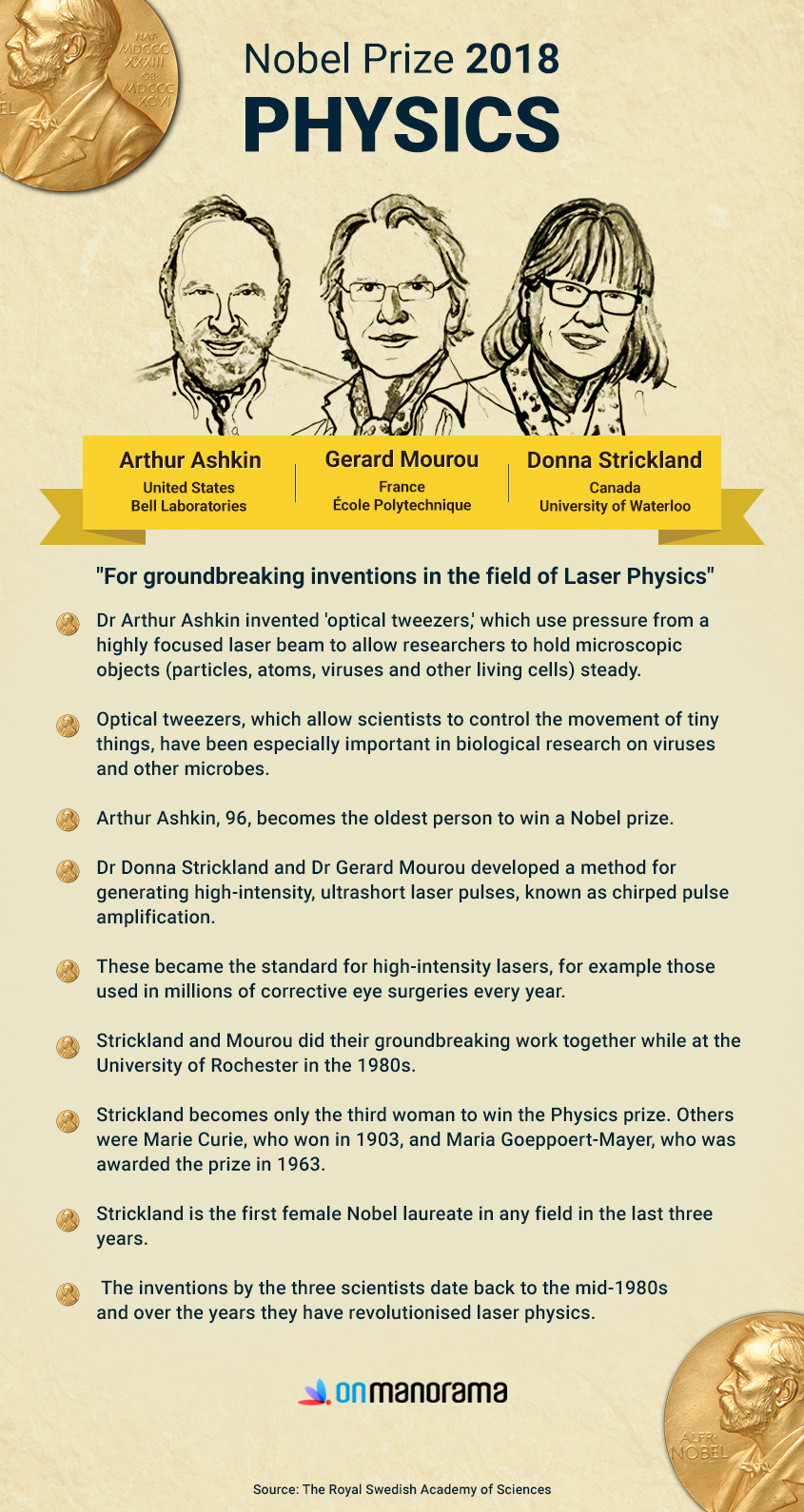3 share Nobel Physics for breakthrough in laser research

Mail This Article
A trio of American, French and Canadian scientists won the 2018 Nobel Prize for Physics on Tuesday for breakthroughs in laser technology that have turned light beams into precision tools for everything from eye surgery to micro-machining.
They include the first female physics prize winner in 55 years.
Arthur Ashkin of Bell Laboratories in the United States won half of the prize for inventing 'optical tweezers' while Frenchman Gerard Mourou, who also has US citizenship, and Canada's Donna Strickland shared the other half for work on high-intensity lasers.
Strickland, of the University of Waterloo, Canada, becomes only the third woman to win a Nobel prize for physics, after Marie Curie in 1903 and Maria Goeppert-Mayer in 1963.
"Obviously we need to celebrate women physicists because we are out there and hopefully in time it will start to move forward at a faster rate," she told news conference by telephone, shortly after learning of the prize.
The Nobel prizes have long been dominated by male scientists, and none more so than physics.
Strickland is the first female Nobel laureate in any field in three years. The Royal Swedish Academy of Sciences said last year it would seek to more actively encourage nominations of women researchers to begin addressing the imbalance.
The inventions by the three scientists date back to the mid-1980s and over the years they have revolutionised laser physics.
"Advanced precision instruments are opening up unexplored areas of research and a multitude of industrial and medical applications," the academy said on awarding the nine million Swedish crown ($1 million) prize.
Ashkin's work was based on the realisation that the pressure of a beam of light could push microscopic objects and trap them in position. A breakthrough came in 1987 when he used the new optical tweezers to grab living bacteria without harming them.

Ashkin, 96, is the oldest ever Nobel prize winner.
Mourou and Strickland's research centred on developing the most intense laser pulses ever created by humans, paving the way for the precision instruments used today in corrective eye surgery and industrial applications.
The prizes for achievements in science, literature and peace have been awarded since 1901 in accordance with the will of Swedish business tycoon Alfred Nobel, whose discovery of dynamite generated a vast fortune used to fund the prize.
Physics is the second of this year's crop of prizes and comes after the medicine prize was awarded on Monday for discoveries about how to harness and manipulate the immune system to fight cancer.
However, for the first time in decades no Nobel Prize for literature will be given this year after a scandal over sexual misconduct allegations saw a string of members leave the board of the Swedish Academy that awards it.


